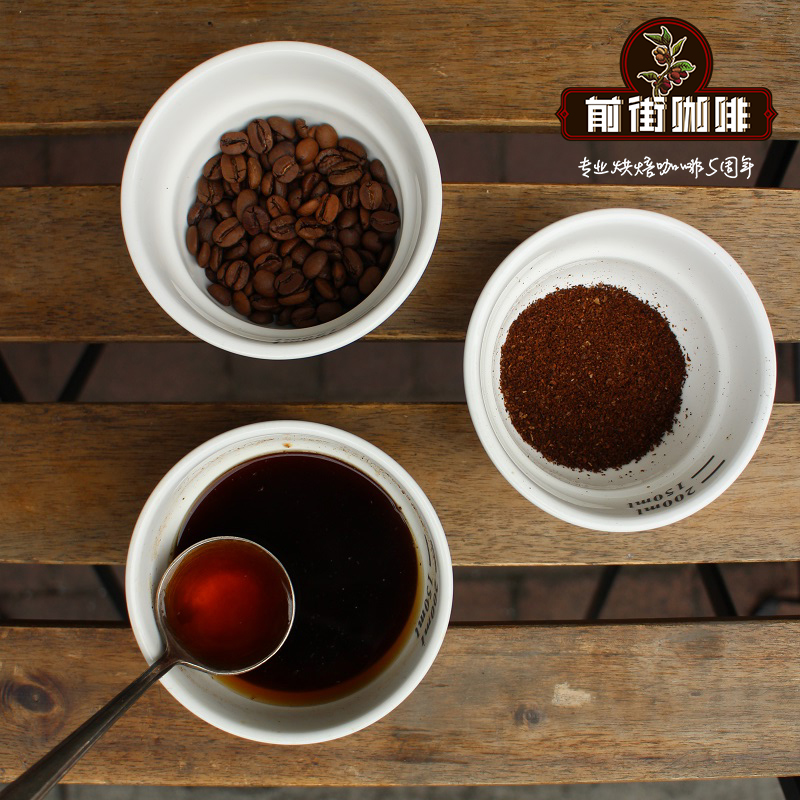The highest planting height of Nicaraguan coffee beans in Bosnia and Herzegovina is 1500-2000.

Professional coffee knowledge exchange more coffee bean information please follow the coffee workshop (Wechat official account cafe_style)
Nicaragua
It is mainly divided into four major producing areas, namely (Segovias), Madaguelba / Henodeka area (Matagalpa/Jinotega), Polgo District (Boaco) and Pacific Coast area (Pacific). The highest planting height in Bosnia and Herzegovina is about 1500-2000, and the coffee produced is the highest SHG (Strictly High Grown).
Planted with volcanic ash and shaded by trees, high-quality Nicaraguan coffee is produced. Its flavor is mediocre, soft and slightly sour, so it is suitable for comprehensive coffee. The volume of Nepalese coffee is the largest of all coffee beans, among which the giant beans produced in Madagelba are the most distinctive. This kind of giant bean particles are larger than ordinary coffee beans, commonly known as elephant beans, with a distinctive special flavor, but also with the round texture of Maragogipe coffee, its sister product Matagalpa contains wild acidity and indescribable aroma.
Coffee trees in this area are several ancient bourbon species, usually planted on hillsides at an altitude of 1200 to 1500 meters, and have been recognized as excellent organic coffee at high elevations by the OCIA (Organic crop improvement Association). Nepalese coffee is particularly suitable for deep roasting and is recommended for brewing espresso.
Nicaraguan coffee is mainly produced in the central and northern parts of the country, with shade planting as its characteristic, while coffee beans are washed and dried in the sun. Generally speaking, Nicaraguan coffee is less distinctive, so Nicaraguan beans are often used as mixed coffee or instant coffee. But high-quality Nicaraguan beans such as Maragogipe (a tree with large coffee beans called elephant beans) are highly rated because they are well-balanced and do not have the distinct acidity that other Central American coffees often have, but have a clear taste and excellent aroma. This round and soft texture also makes it a unique show in the more moderate evaluation of Guatemalan coffee and is loved by many people.
END
Important Notice :
前街咖啡 FrontStreet Coffee has moved to new addredd:
FrontStreet Coffee Address: 315,Donghua East Road,GuangZhou
Tel:020 38364473
- Prev

Introduction of coffee bean flavor characteristics of Yega Sheffivoka Cooperative Coffee Waka Coffee handbrewing Scheme sharing
Yejia Xuefei, nearly 2,000 meters above sea level, is one of the highest coffee producing areas in the world. Here has been a wetland since ancient times, Yirga means to settle down, Cheffe means wetland, Lake Turkana, Lake Abaya, Lake Chamo bring rich water vapor here. To the valley of fog (Mist)
- Next

Description of the Flavor characteristics of Erica Coffee in the Sun
Yega Chefe Erica G1 Ethiopia Yirgacheffe Aricha G1 has strong floral and citrus acidity, soft and smooth chocolate flavor, bringing you a sweet finish. Yirga cheffe is a small town in Ethiopia, 1700-2100 meters above sea level. It is one of the highest coffee producing areas in the world. It is also an Ethiopian boutique coffee.
Related
- Detailed explanation of Jadeite planting Land in Panamanian Jadeite Manor introduction to the grading system of Jadeite competitive bidding, Red bid, Green bid and Rose Summer
- Story of Coffee planting in Brenka region of Costa Rica Stonehenge Manor anaerobic heavy honey treatment of flavor mouth
- What's on the barrel of Blue Mountain Coffee beans?
- Can American coffee also pull flowers? How to use hot American style to pull out a good-looking pattern?
- Can you make a cold extract with coffee beans? What is the right proportion for cold-extracted coffee formula?
- Indonesian PWN Gold Mandrine Coffee Origin Features Flavor How to Chong? Mandolin coffee is American.
- A brief introduction to the flavor characteristics of Brazilian yellow bourbon coffee beans
- What is the effect of different water quality on the flavor of cold-extracted coffee? What kind of water is best for brewing coffee?
- Why do you think of Rose Summer whenever you mention Panamanian coffee?
- Introduction to the characteristics of authentic blue mountain coffee bean producing areas? What is the CIB Coffee Authority in Jamaica?

